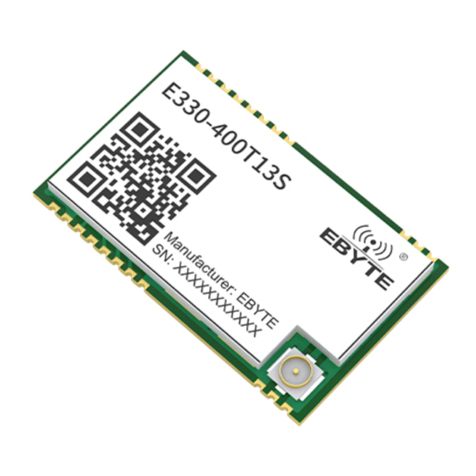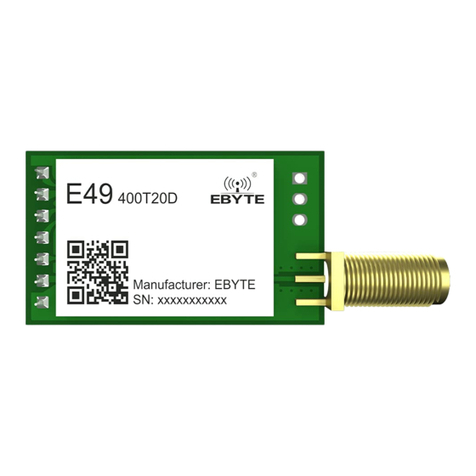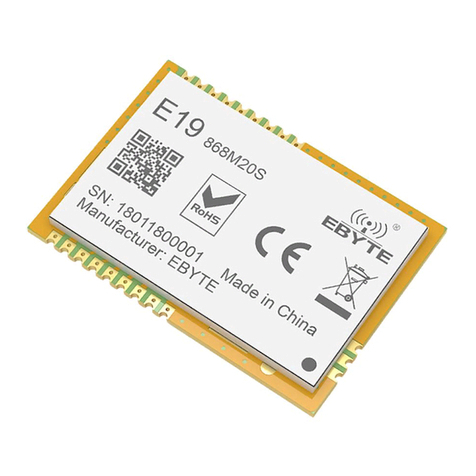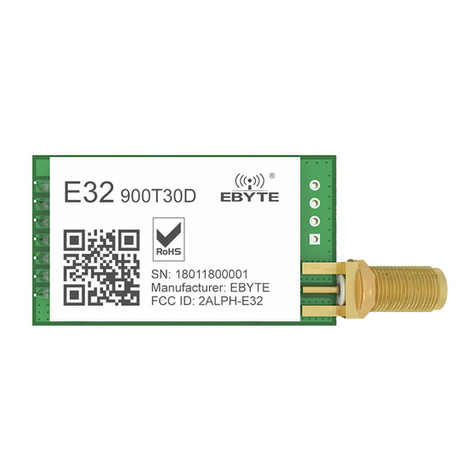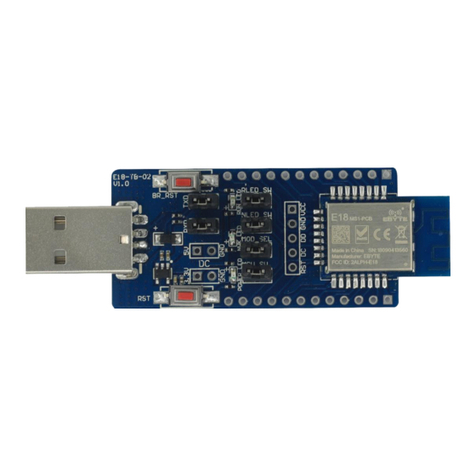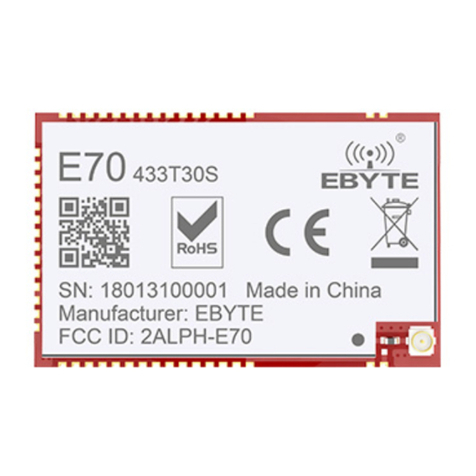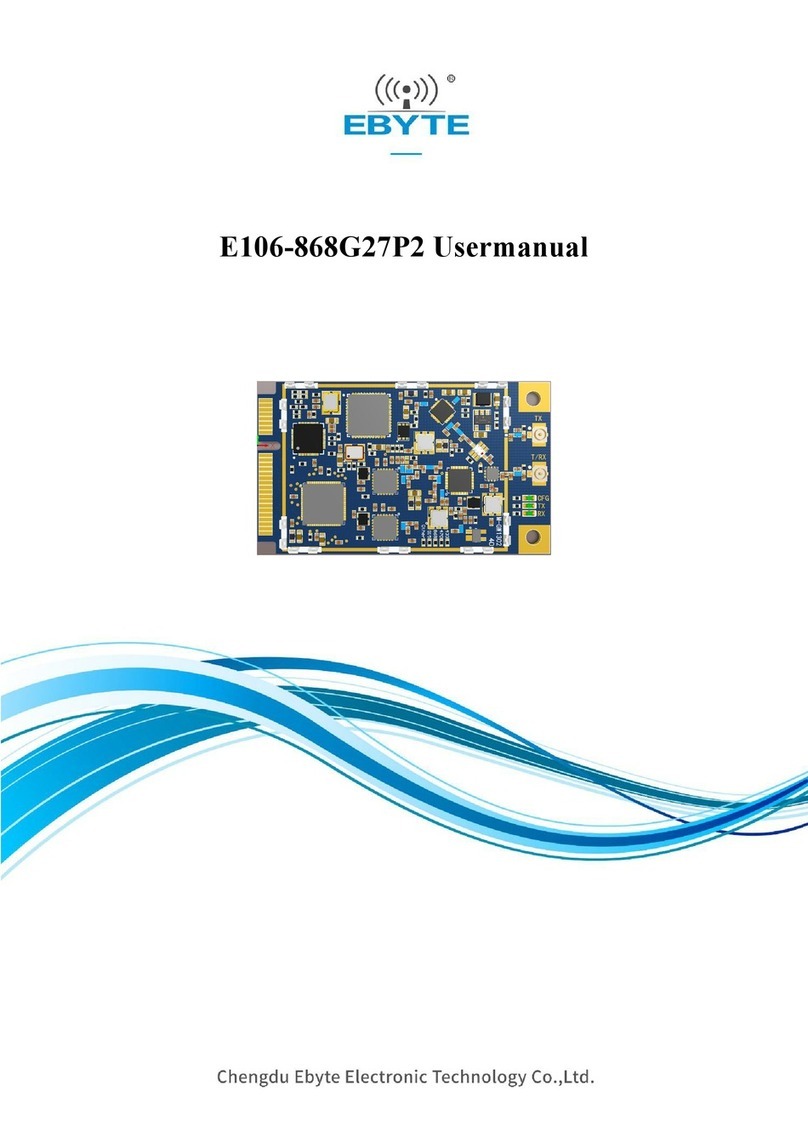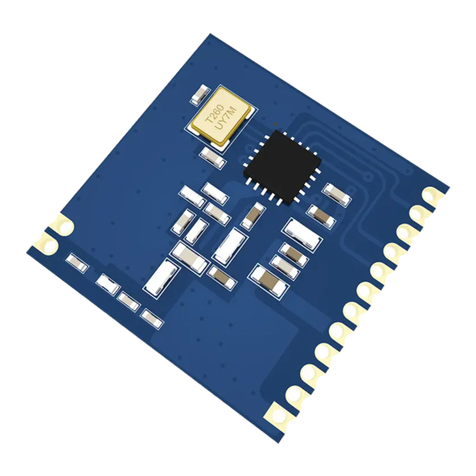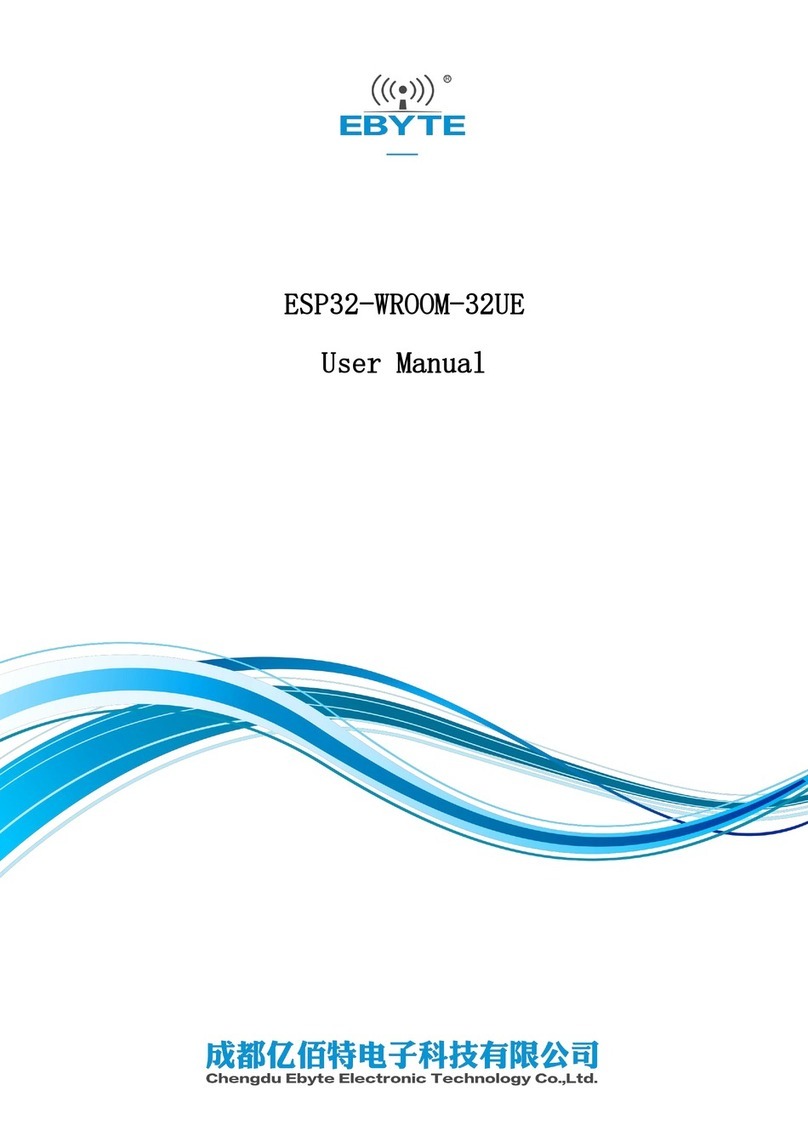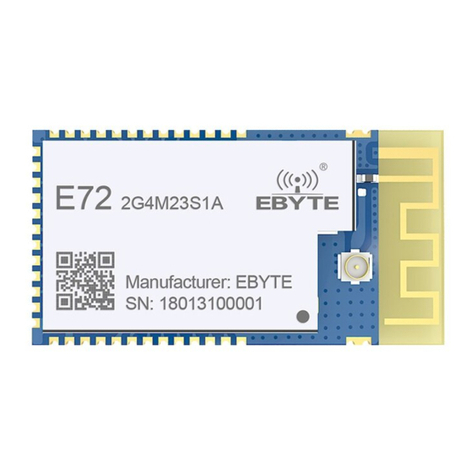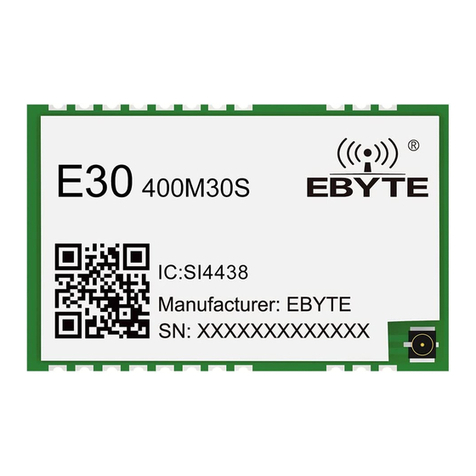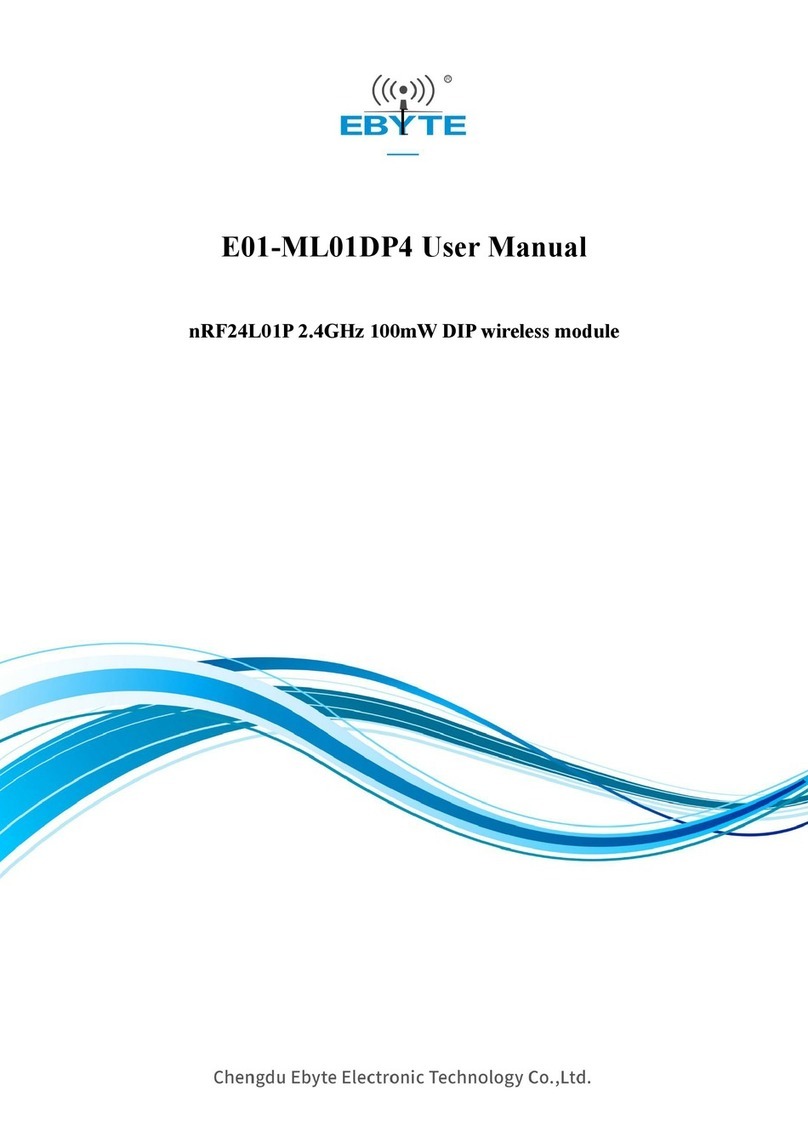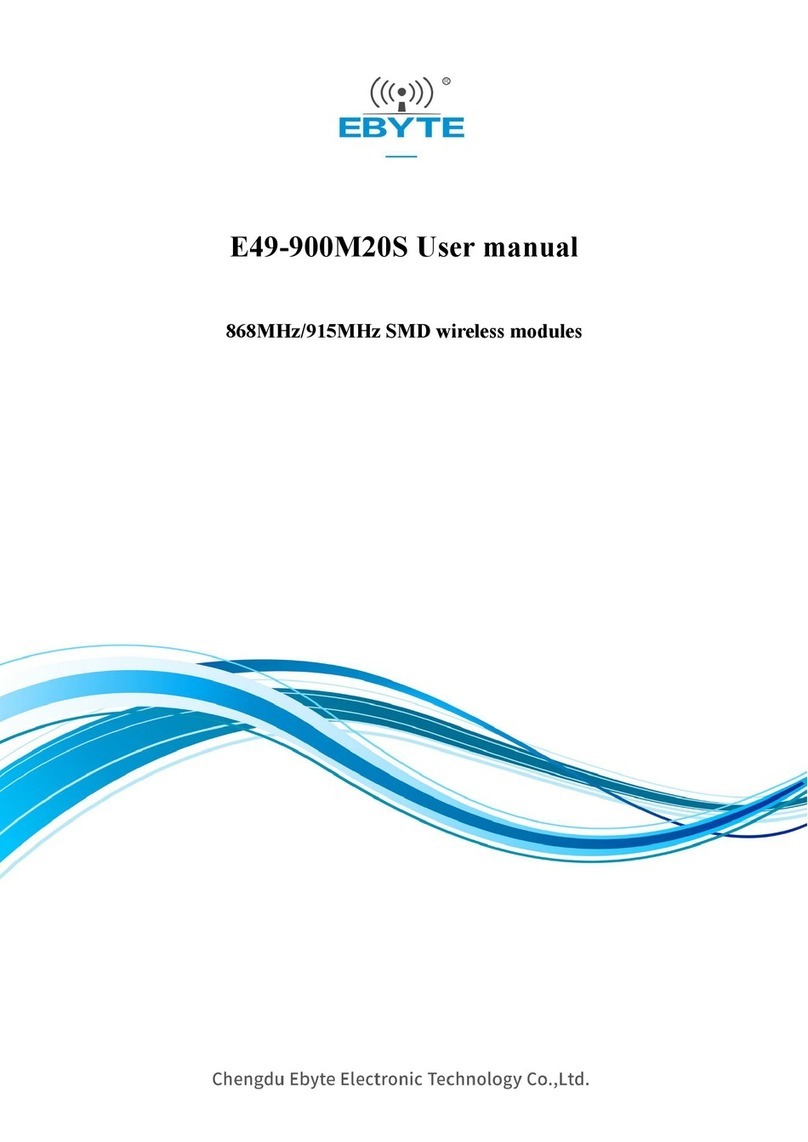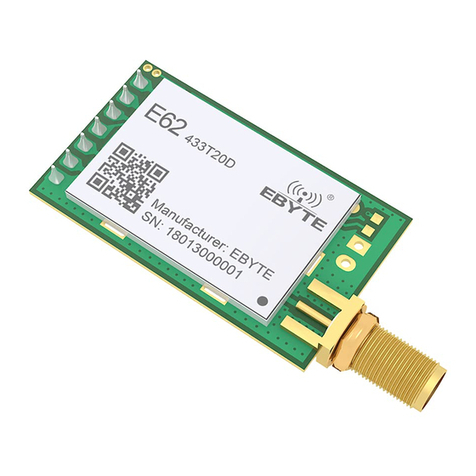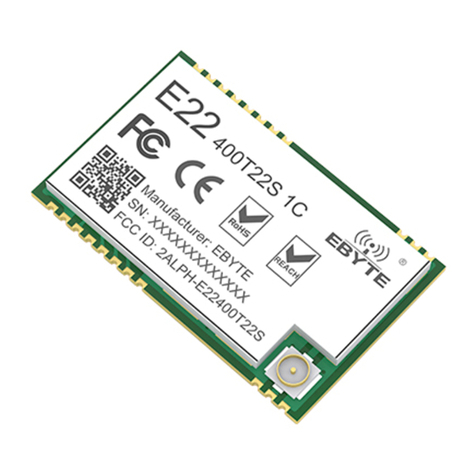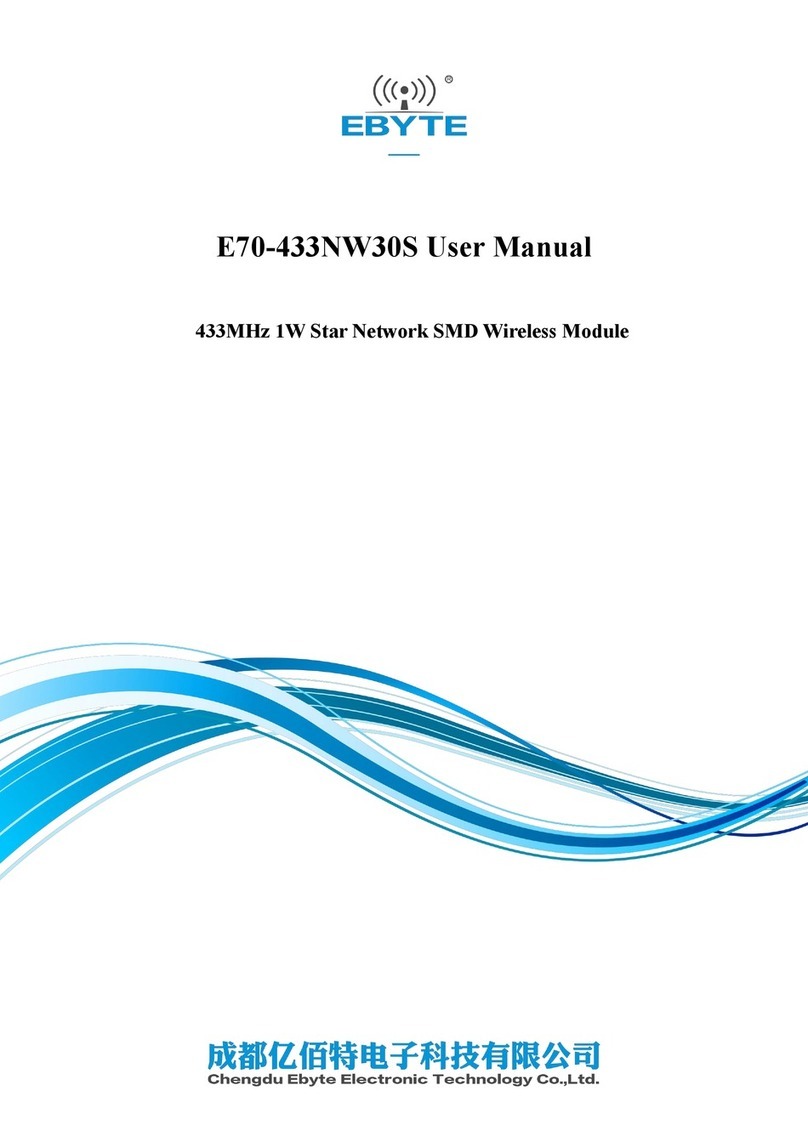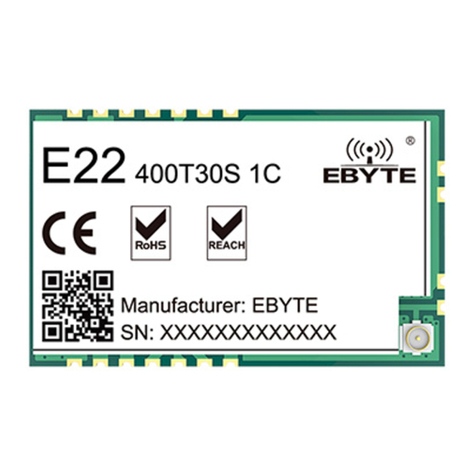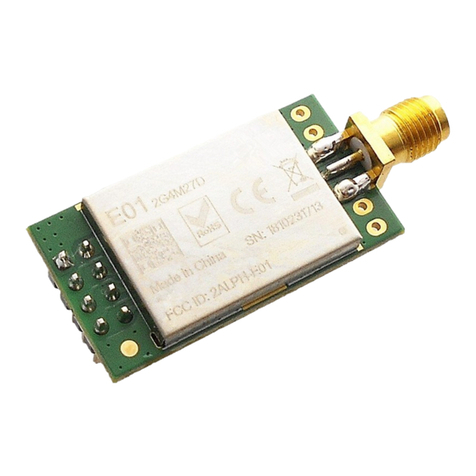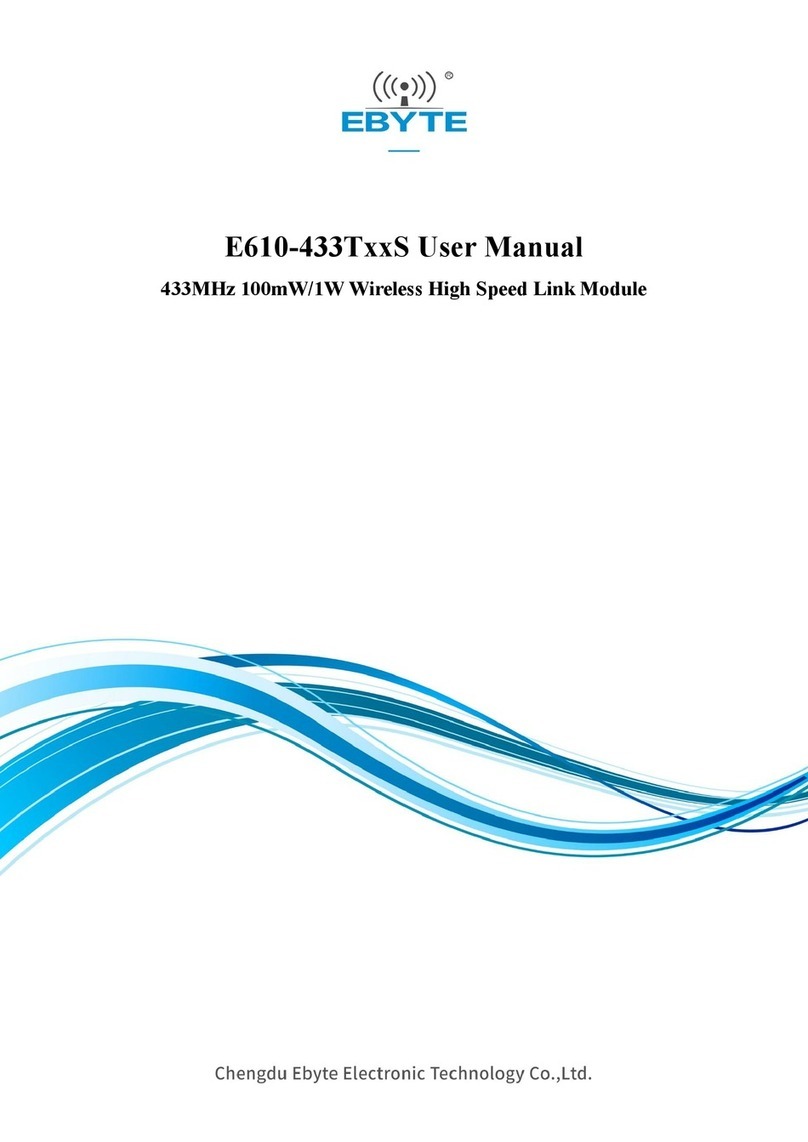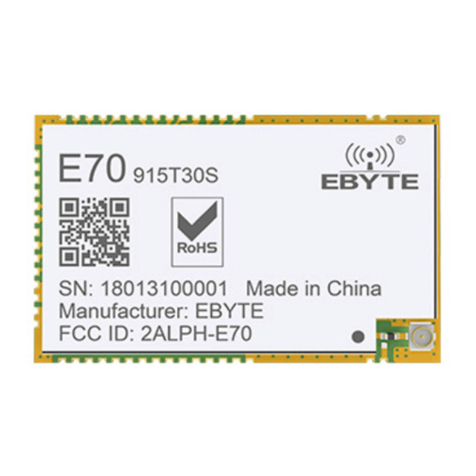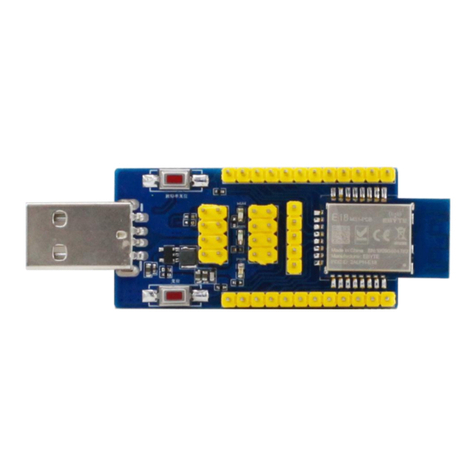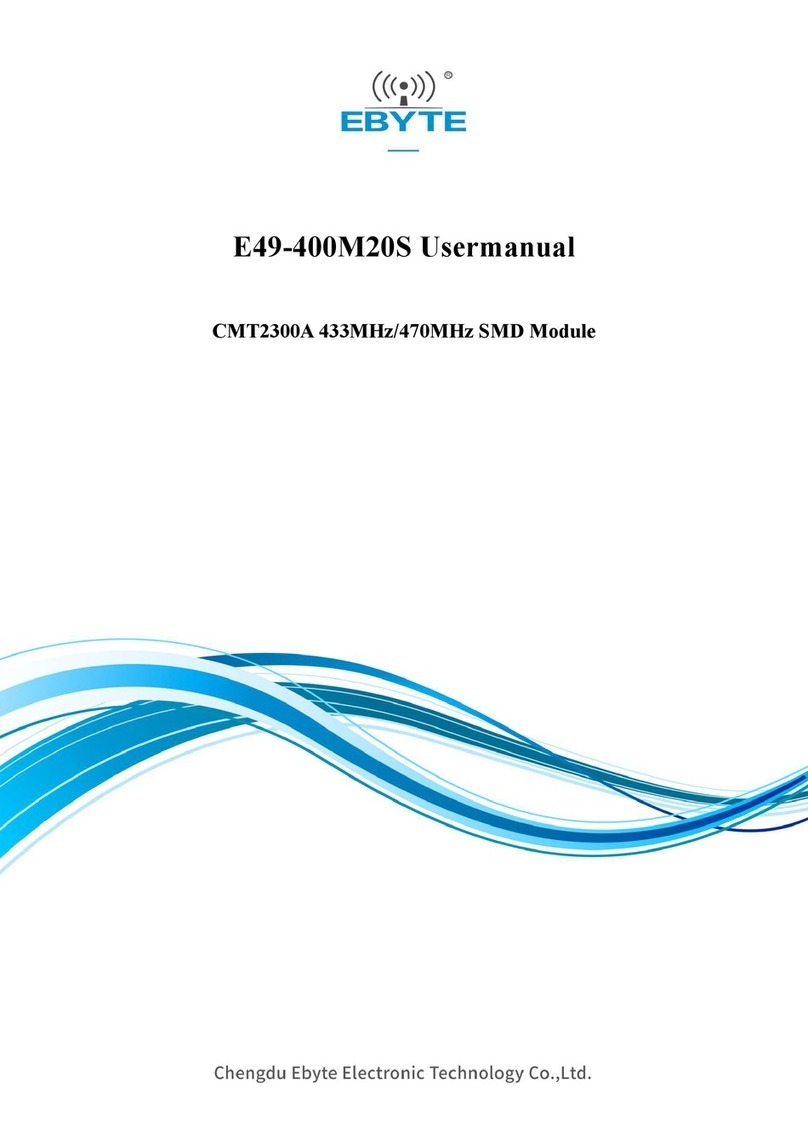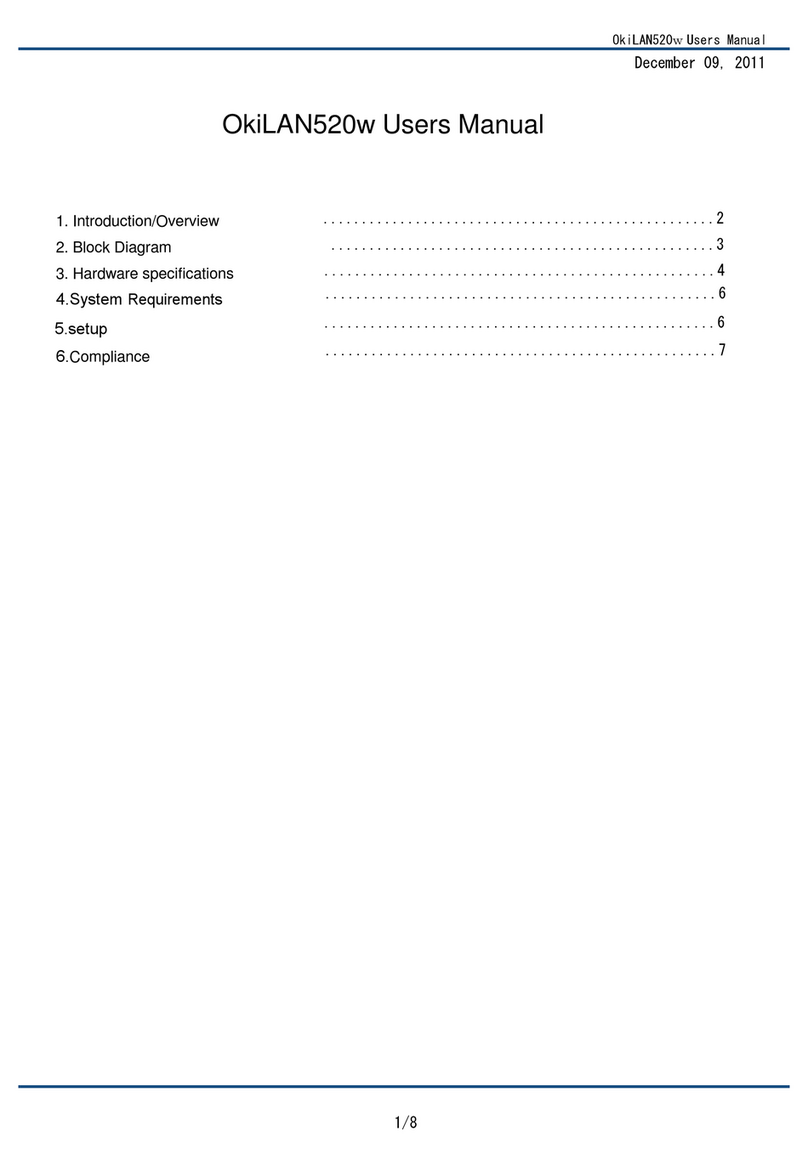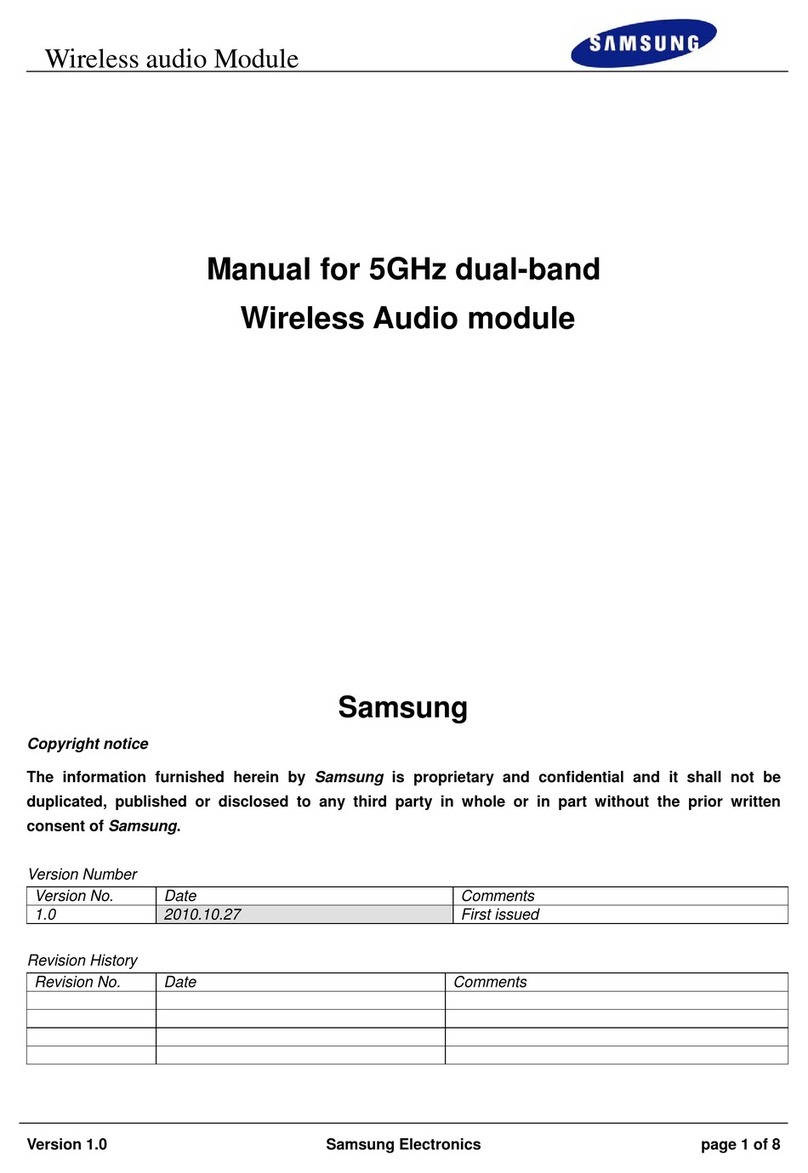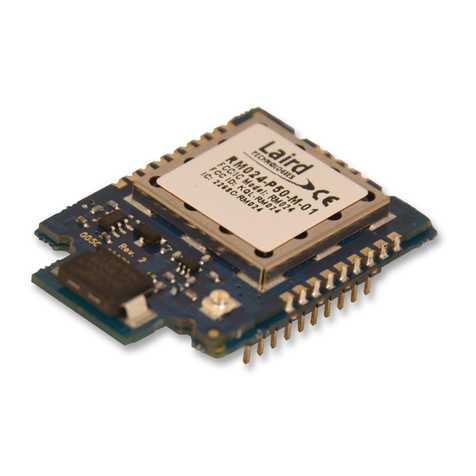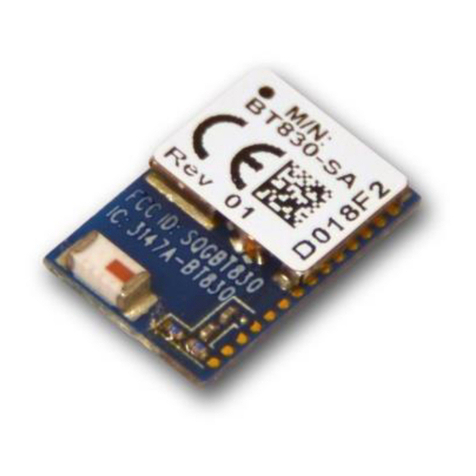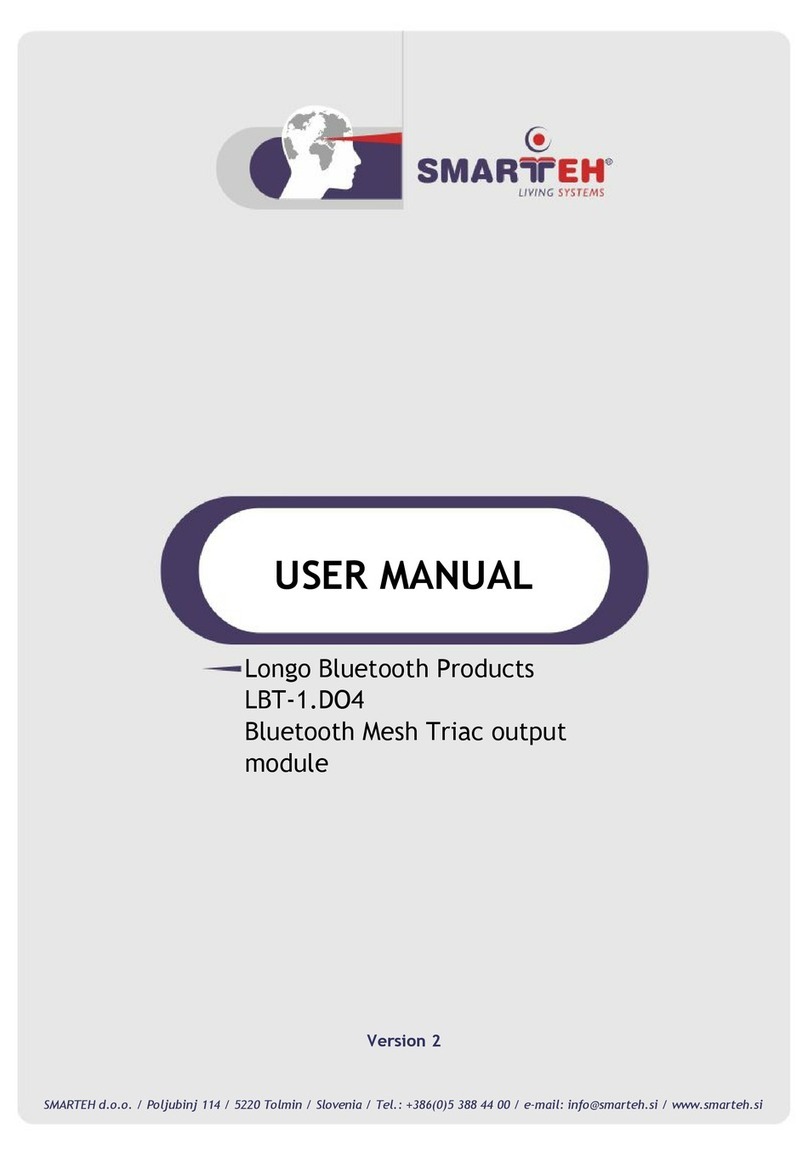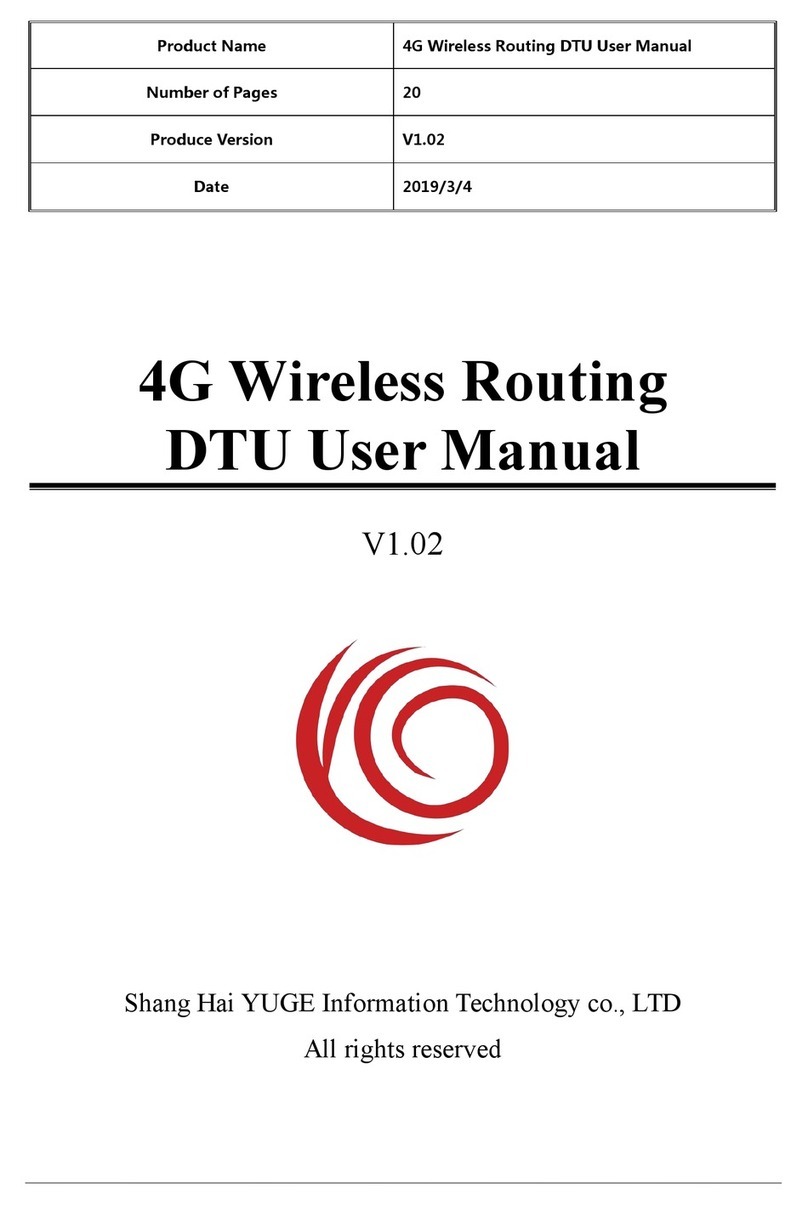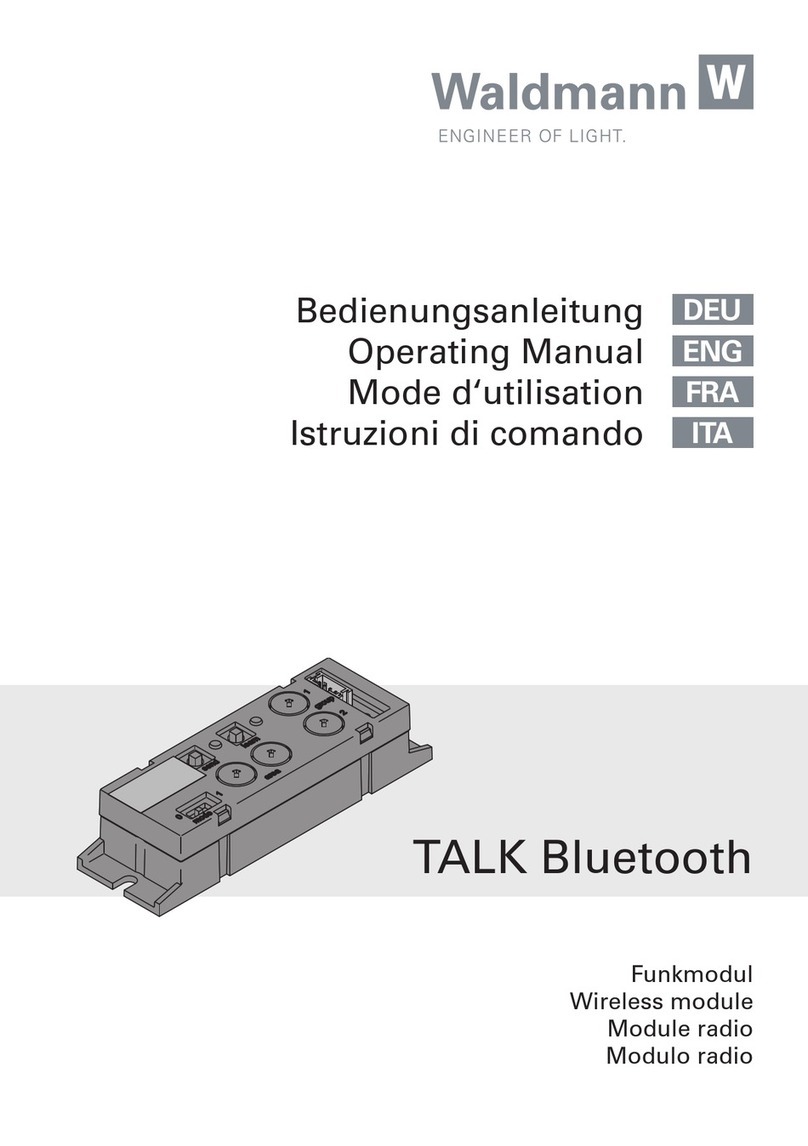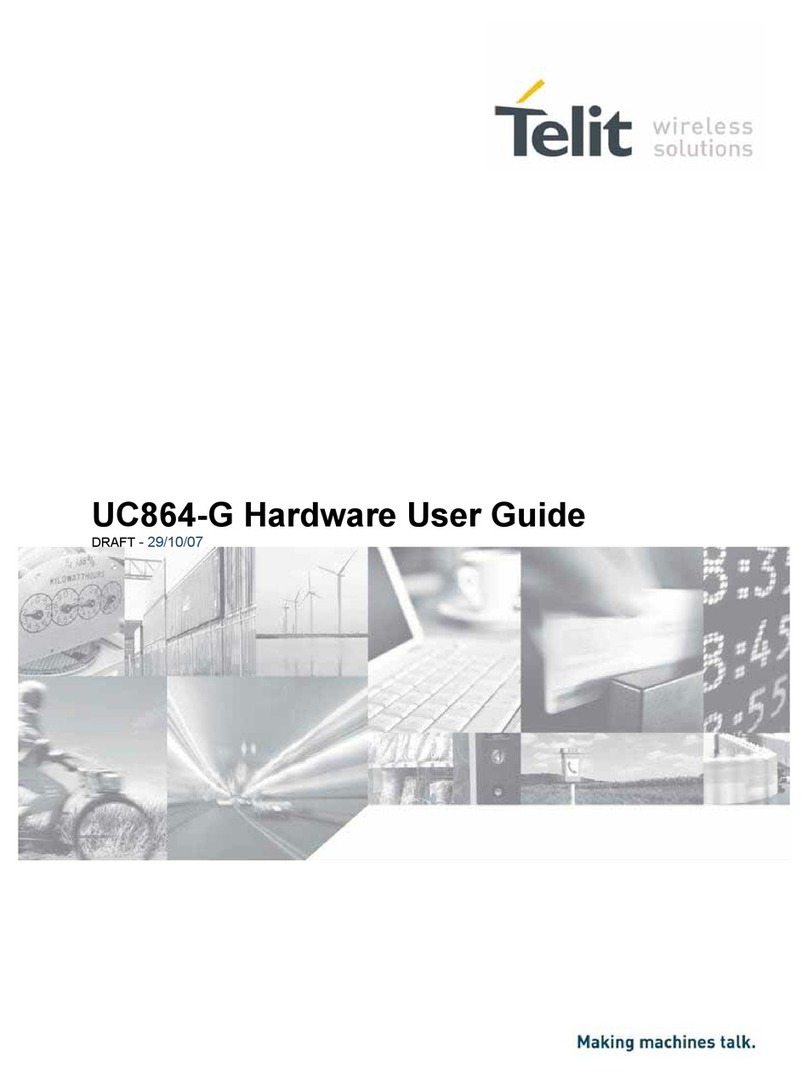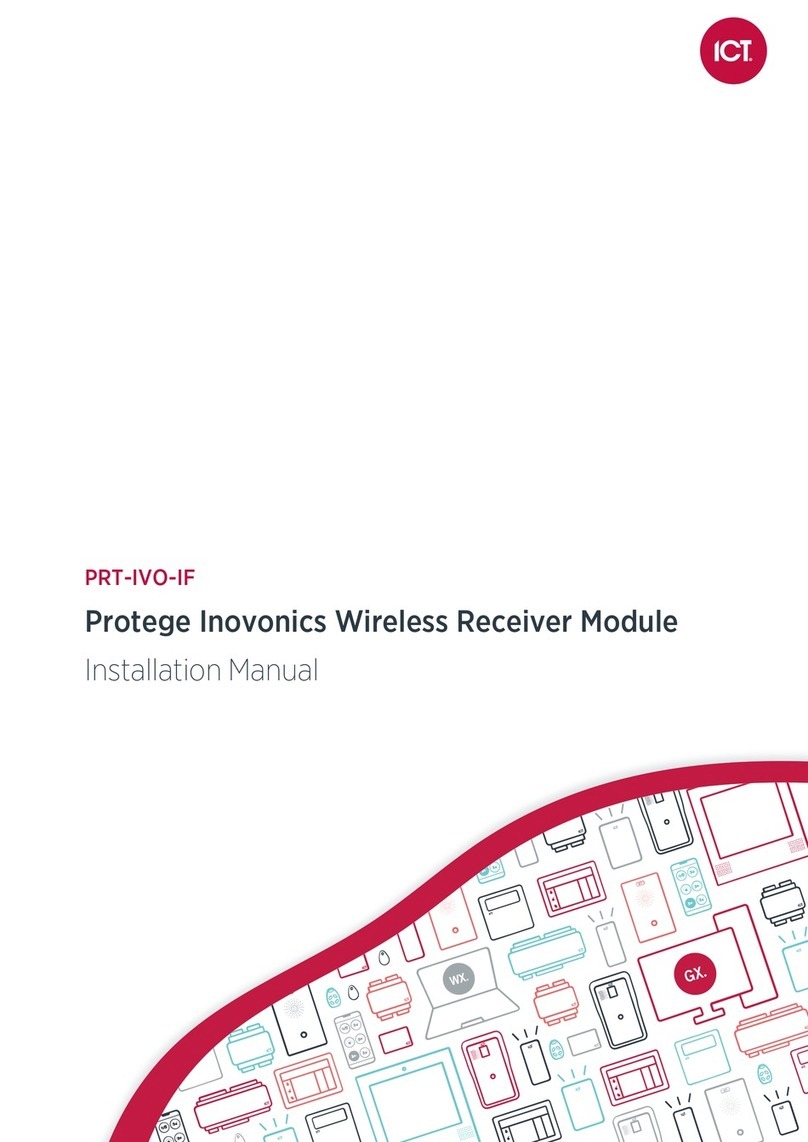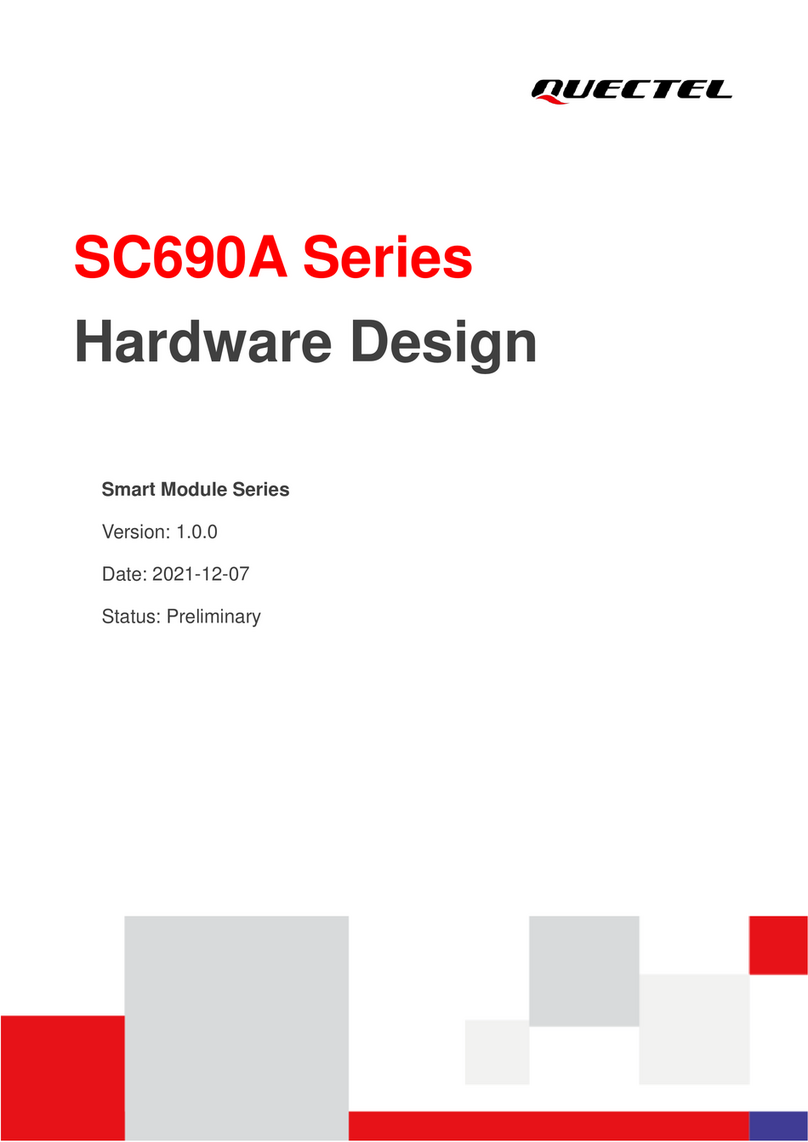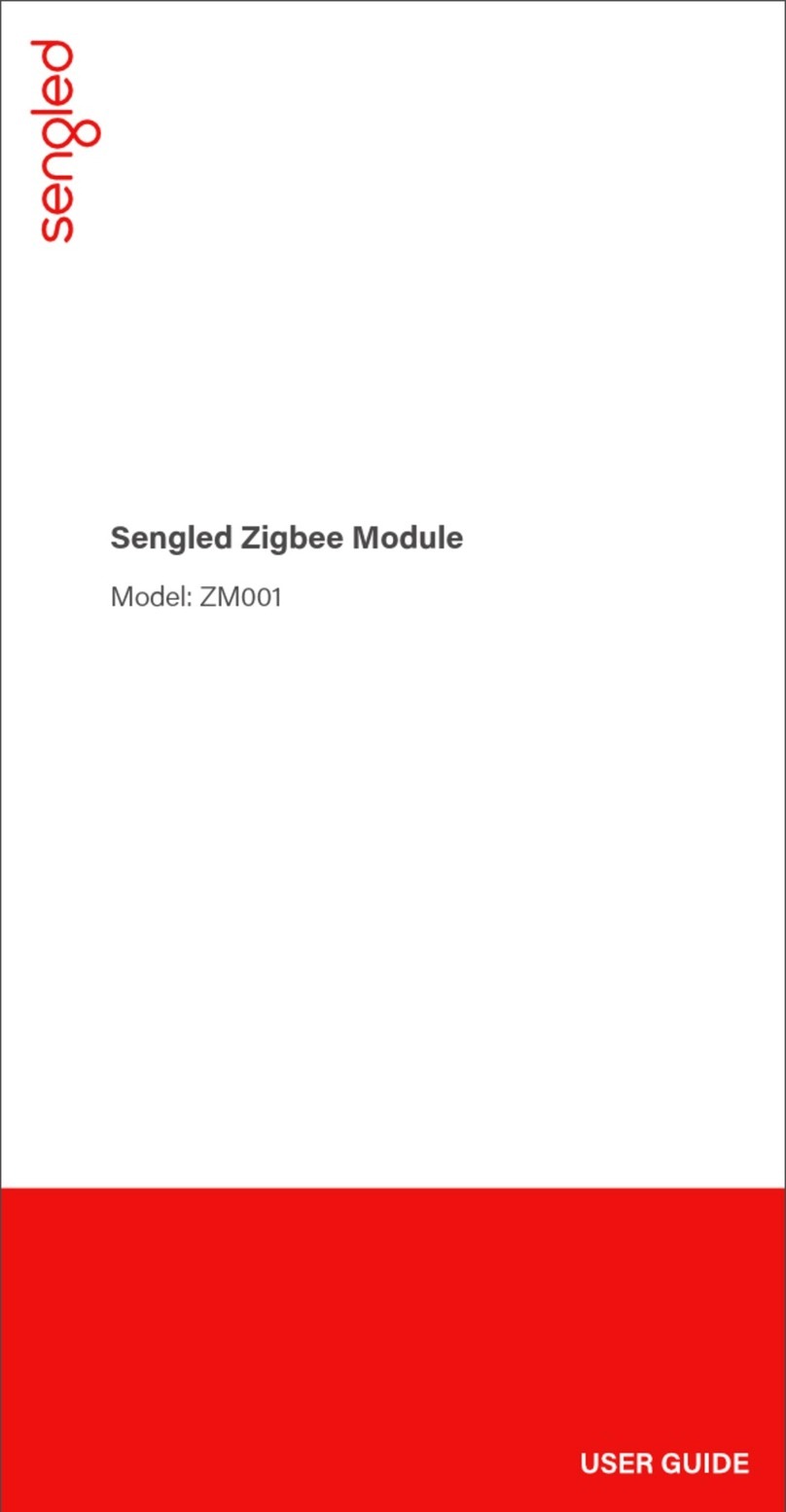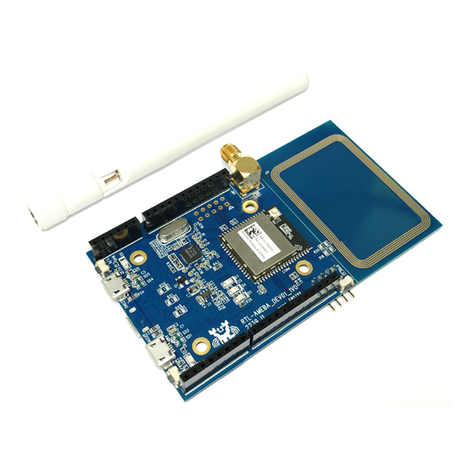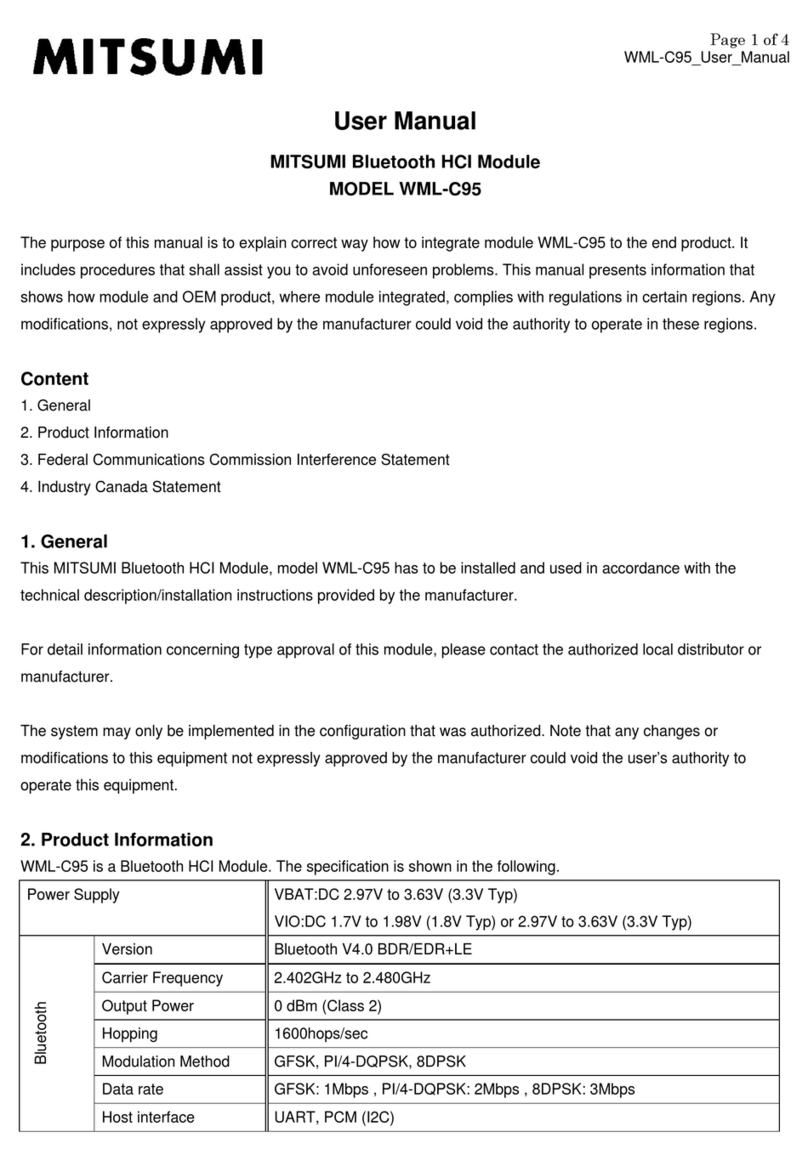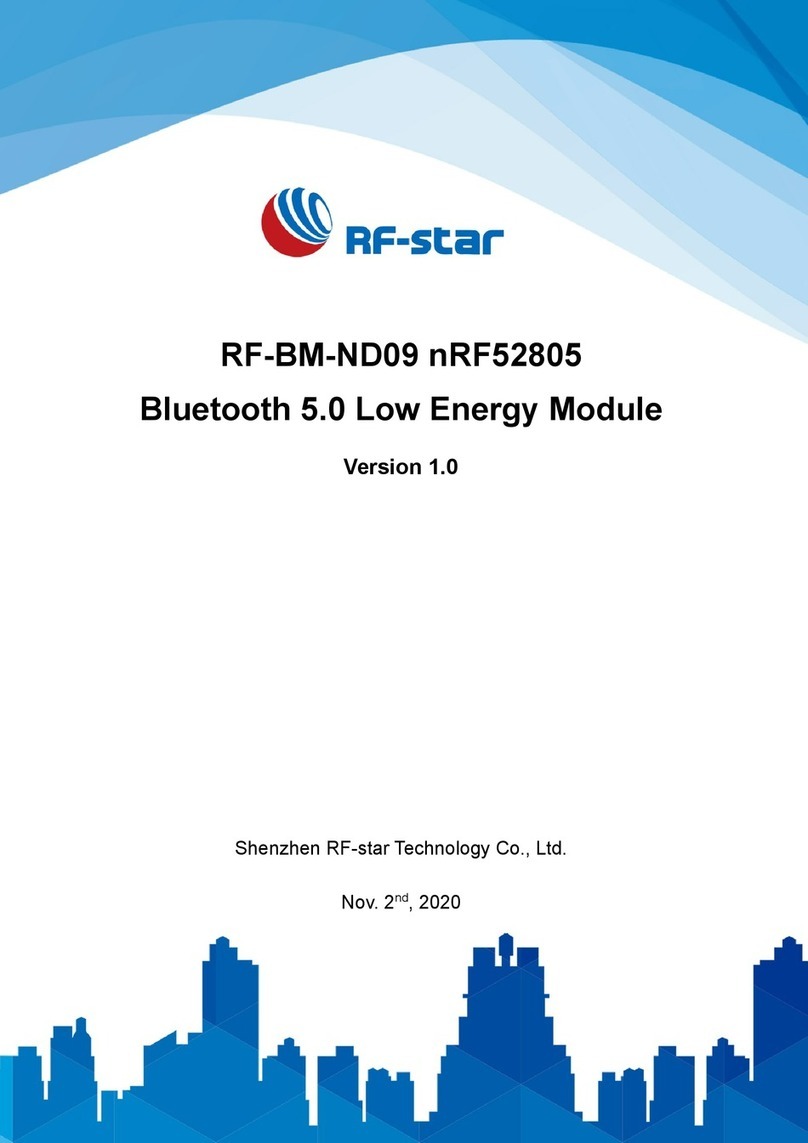
Chengdu Ebyte Electronic Technology Co.,ltd. E18-MS1PA2-IPX User Manual
Copyright ©2012–2019,Chengdu Ebyte Electronic Technology Co.,Ltd.
5-7
5. Programming
5.1 TI ZigBee FAQ
①Differences between different versions of TI's ZigBee protocol stack, how to choose the right
protocol stack for product development?
From the Z-Stack 0.1 to Z-Stack 2.5.1a and the current Z-Stack Home 1.2.1, Z-Stack Lighting 1.0.2, Z-Stack Energy
1.0.1, Z-Stack Mesh 1.0.0, TI mainly upgraded the protocol stack through: 1) adding some new features according to
ZigBee Specification of the ZigBee Alliance, for example, ZigBee2007 tree-shape route, adding Mesh route in ZigBee
Pro, and raising MTO and Source Routing algorithms so TI added some new functions to the protocol stack, also did
some correction of bugs in Spec such as some unclear descriptions; 2) Correction of bugs of TI ZigBee protocol itself.
You can find the differences between one protocol stack and the previous version in the Release Note of the installation
directory.
After the Z-Stack 2.5.1a, TI did not publish the protocol stack in the form of Z-Stack 2.6.x but in Application Profile
form, because TI hopes the developers could select proper protocol stack based on actual applications. The protocol
stacks like Z-Stack Home 1.2.1 includes two parts: 1)Core Stack, it is the follow-up versions of Z-Stack 2.5.1a, it can be
found from the Z-Stack Core Release Notes.txt, Version 2.6.2. 2)Profile-related part, this part is related to the actual
application, Home Automation stack is about the realization of ZigBee Home Automation Profile. Meanwhile, Z-Stack
Lighting 1.0.2 and Z-Stack Energy 1.0.1 are Core Stack with Profile for application.
1) Z-Stack Home 1.2.2a is specific for smart home products development.
2) Z-Stack Lighting 1.0.2 is specific for ZLL products development.
3) Z-Stack Energy 1.0.1 is specific for intelligent energy, meter, In Home Display, and so on.
4) Z-Stack Mesh 1.0.0 is specific for private applications, it only utilizes the function of standard ZigBee protocol,
Mesh route and so on, the application layer shall be defined by the developer.
After the publish of ZigBee 3.0 protocol, the latest ZigBee protocol stack is Z-Stack 3.0, it supports CC2530 and
CC2538.
②How to apply for standard ZigBee test certification?
Take standard ZigBee Home Automation products as example, developers must develop according to the description
in the ZigBee Home Automation Profile Specification, this document can be found from www.zigbee.or. After
developing the product, developers need to learn the ZigBee Home Automation Profile Test Specification, this document
described the items to be tested by the Test House, it can be downloaded from www.zigbee.org also, in addition, there is
another PICS document, it is specific for describing the functions supported, developers confirm the functions by
checking the boxes according to the actual functions and the required functions in the Specification, as below are the
testing procedure:
1) Join the ZigBee alliance, generally assisted by testing labs;
2) Send samples to testing lab, complete the PICS file;
3) First round pre-testing, the testing lab feedback the testing results, developers modify the sample codes.
4) The testing lab verify the modified sample, and starts formal test;
5) The testing lab assists developers to complete the ZigBee alliance online certification application;
6) The testing lab submits the test report to ZigBee alliance. The alliance will review and issue certificate.
Currently, there are two testing labs in China who can complete standard ZigBee test:
1) CESI in Beijing;

